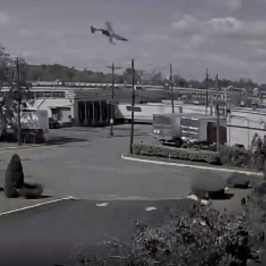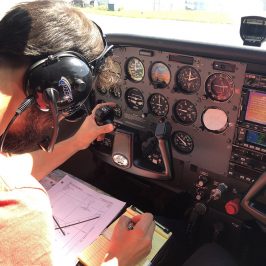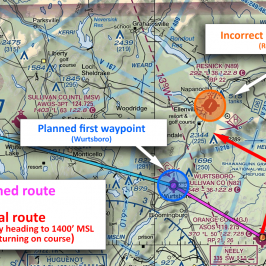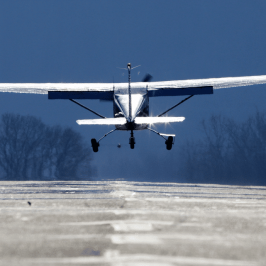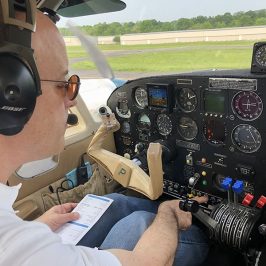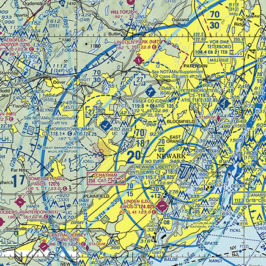(Cont’d from page 1)
EFB confusion.
EFBs (Electronic Flight Bags) are great tools; they’re here to stay. Private pilot, instrument rating, commercial pilot, ATP and flight instructor applicants are welcome to bring an EFB as well as use it for flight planning, document storage, and all aspects of flight planning and in-flight applications. Here are two of the most popular apps used in aviation today, side-by-side: ForeFlight (left) and Garmin Pilot (right).
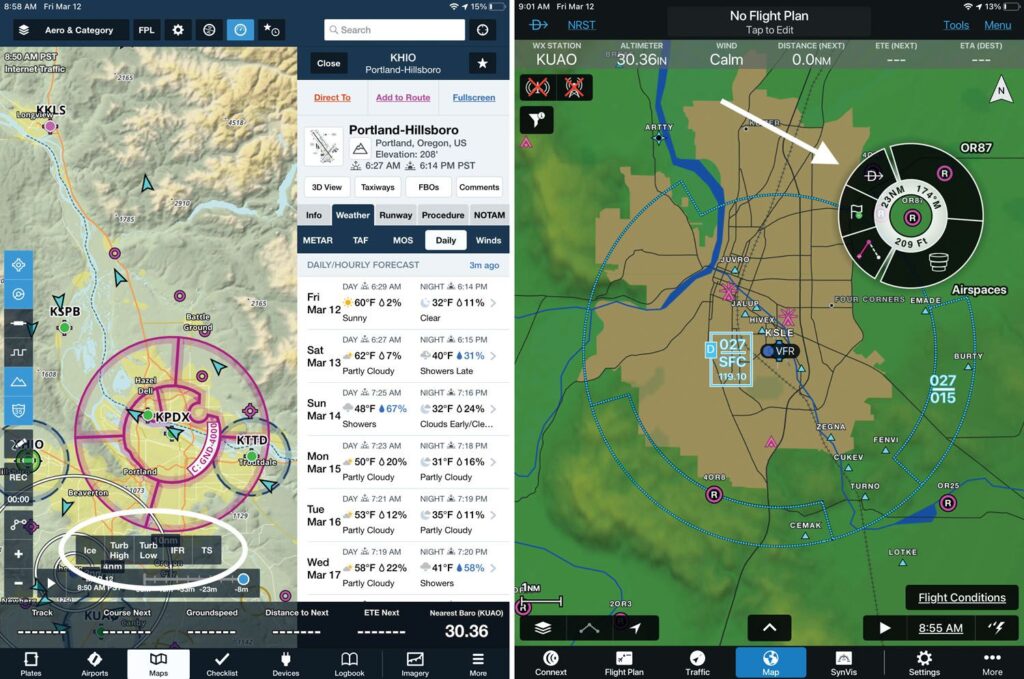
Paper charts, “whiz-wheels” (the mechanical E6-B flight computers which have been with us for many decades), and printed documents (AIM, POH, etc.) are also perfectly functional and will have a place in the training environment for years to come.
There are some gotchas to the EFB path.
Flight planning: want ForeFlight (or whichever app you use) to generate your flight plan for you? That’s acceptable, but…
… you’ll need to demonstrate that you understand the fundamentals. Therefore, expect to be asked how your heading was computed, how the WCA (wind correction angle) was derived, etc.
You examiner isn’t concerned with whether you’re a ForeFlight or GP expert, rather whether you can demonstrate your core knowledge of the subject matter. This foundational knowledge is required for your continued development as a pilot, beyond the given certification level.
Expect to be asked basic questions about the VFR sectional or low level enroute chart. Sometimes this requires increasing your familiarity level with your EFB. For example, can you identify details about SUA on the VFR sectional? Are you able to clearly explain the symbology on an IFR low-level enroute chart? Etc.
IRA and CFI-IA applicants: are you using Jeppesen products instead of NACO?
Understand the differences. Know where to find non-standard alternate minimums, know how to interpret the inoperative equipment tables, and so on. Both products are perfectly suitable – you simply must demonstrate you’re able to use them effectively.
In short: don’t let the technology shortcut you to a Notice of Disapproval.
If “paper” is easier for you, use it. The Practical Test is all about demonstrating your knowledge and skill. You can learn how to use sophisticated apps like those described above, later! On the other hand, if you’re comfortable using all of the features necessary to display your ability to function in the National Airspace System, that’s perfectly fine, too.
Not being familiar with the skill elements for the flight tasks.
We just talked about that, didn’t we? Yes, this is repetition with a little extra specificity, by me, on purpose.
Here’s a laser focus on one task: Task I.E, “Short-Field Takeoff and Maximum Performance Climb”, which is strikingly similar for both Private and Commercial Pilot applicants. Among other skill elements, S3 requires the pilot to “verify assigned/correct runway,” S5 to “position the flight controls for the existing wind, if applicable,” and S6 to utilize “maximum available takeoff area.”
These are skill elements. They will be tested. Demonstrate your proficiency on each skill element.
Proper crosswind takeoff and landing techniques.
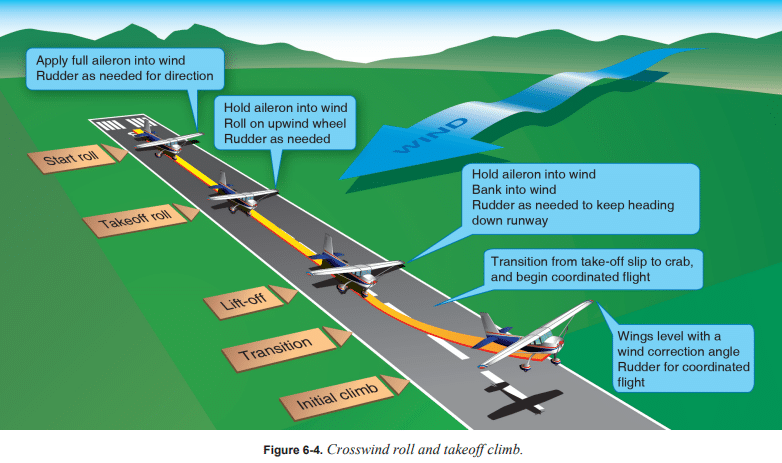
Crosswind takeoffs and landings remain a challenge for pilots at all levels of certification. The image above describes the correct technique for a crosswind takeoff, taken from Chapter 7 of the Airplane Flying Handbook (FAA-H-8083-3C).
If was wearing my Flight Instructor hat, I’d say this: don’t overthink crosswind takeoffs or landings. The airplane will tell you what it needs from you in terms of aileron and rudder inputs. If you sense the aircraft beginning to drift left or right, apply aileron in the proper direction. If the nose is not aligned with the centerline of the runway, use appropriate applications of rudder to make it so. It’s truly that simple, but does take practice.
On departure, crosswind inputs decrease during the takeoff roll, as the aircraft accelerates – but rarely need to be removed entirely.
On landing, crosswind inputs increase to full deflection as the aircraft’s airspeed decreases. When taxi speed is achieved, use the appropriate technique.
Do not begin the takeoff roll or enter the round-out on landing without crosswind control inputs applied, if they are warranted!
Applicants aren’t expected to make beautiful landings… they’re expected to make safe landings within the tolerances stated in the ACS.
For further clarification, talk to your flight instructor.
Neglecting to keep Safety first.
How does an applicant demonstrate good aeronautical decision-making, risk management, CRM (crew resource management), and situational awareness?
There’s no way to create an exhaustive list, but it starts with developing a PIC attitude. You, the applicant, are the Pilot-in-Command. That’s true in every sense of the word, and it should be demonstrated at every opportunity.
Clearing turns, querying ATC in the case of confusion, strong vigilance to avoid collisions and deconflict the aircraft, and good radio comms technique are central players in a strong safety focus.
This is the bread-and-butter of demonstrating the skill level required for the certificate level in question. Make it your top priority. If an unsafe outcome appears inevitable, your examiner will take over and the applicant will be issued a Notice of Disapproval.
Safe Flights!
-Ryan

